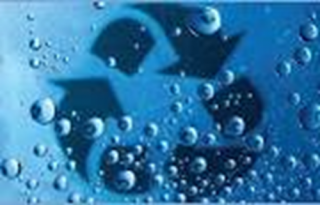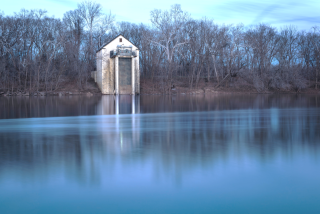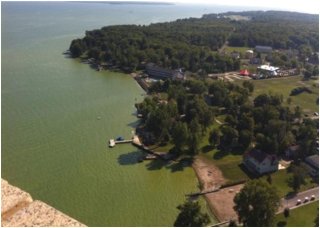Source Water Quality Research
Sources of public drinking water come from can come from groundwater and surface waters, including aquifers, springs, streams, rivers, lakes, and reservoirs. Protecting source water can reduce risks by preventing exposures to contaminated water.
EPA researchers are exploring interventions to prevent and mitigate source water pollutants, including those associated with harmful algal blooms wildfire, and pathogens. EPA is also focusing on developing tools and resources for communities to support their decision making regarding alternative sources of water, such as water reuse.
- Harmful Algal Blooms and Algal Toxins
- Impacts from Wildfire
- Alternative Water Sources and Aquifer Recharge
Harmful Algal Blooms and Algal Toxins
Algal toxins from harmful algal blooms (HABs) are increasingly contaminating sources waters, as well as the drinking water treatment facilities that the waters supply. Algal toxins, including cyanotoxins, can enter drinking water supplies as a result of the growth of HABs in surface water sources or groundwater sources under the direct influence of surface water.
The management of HABs is first dependent on the ability to identify source waters and associated drinking water treatment systems that are vulnerable to blooms. Then, interventions need to be applied at points from the source water to water distribution. EPA researchers are investigating the efficacy of different interventions to mitigate HAB development in source waters and algal toxin-related risk from impacted source waters.
Research Efforts
- Developing of a rigorous framework for identifying water sources and drinking water systems vulnerable to HABs.
- Evaluating the efficacy and impacts of interventions applied to remove cyanobacterial biomass and metabolites from drinking water.
- Evaluating the efficacy and impacts of chemical and physical HAB interventions applied to source waters.
- Developing the science required for HABs forecasting.
Impacts from Wildfire

Wildfire can impact drinking source water through increased sedimentation and mobilization of nutrients, heavy metals, and other pollutants. These effects may require that drinking water utilities adapt their treatment processes to account for these changes, which may, in turn, result in elevated concentrations of contaminants, including nitrate and disinfection byproducts (DBPs) post-treatment.
Modeling and decision support tools can help explore treatability and adaptation strategies for these impacted systems. Research is critical to better understand how fires affect water quality, drinking water sources, and the overall health of an ecosystem. EPA researchers and EPA grantee award recipients are investigating the impacts of wildfire to source water quality and water infrastructure.
Learn more about wildfire and source and drinking water research.
Alternative Water Sources and Aquifer Recharge

Meeting the demand for clean and adequate supplies of water, especially in regions undergoing hotter and drier climate conditions, requires addressing research gaps associated with water reuse and water storage, including enhanced aquifer recharge. Evaluations of alternative water sources to provide communities with information on securing water for current or future water use is needed.



